Making oobleck, also known as cornflour gloop or slime, was one of the first science activities I wrote about on Science Sparks. It's a brilliant indoor or outdoor science activity that only needs two ingredients, so it is super easy as well! I've given this very old post about how to make oobleck a bit of an update and refresh, so I hope you like it!
What is oobleck?
Gloop or oobleck is just cornflour and water. It's very easy to make and creates a lovely gooey slime that feels solid when you scrunch it up and like a liquid if you let it flow through your fingers.
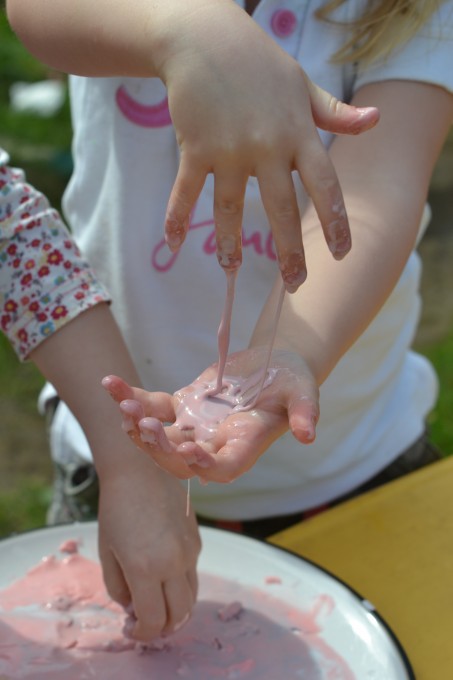
Oobleck Recipe
- Cornflour
- Water
- Food colouring - optional
- Ice cube trays - optional
- Mixing bowl
- Colander, funnel and beakers - optional, but great for messy fun!
Instructions for making cornflour gloop
- Fill a cup with cornflour and pour it into a bowl
- Add water slowly, mixing with your hands, until you get a sticky, slimy gloop.
- If you want to make it coloured, add some food colouring ( be careful this can stain skin and clothes).
- Play with the slime and see how it behaves. Can you make it into a ball? What happens if you throw it onto the floor?
The Science of Oobleck
Did you notice that if you make a ball with oobleck or gloop, it feels solid, but if you drop the oobleck on the floor, it turns liquid again? The cornflour and water mixture is a Non-Newtonian fluid as it doesn't flow like liquids normally do.
Cornflour gloop ( oobleck ) is made up of molecules arranged in long chains. When the chains are stretched, the liquid will flow, but when you force them together, they stick together to form a solid.
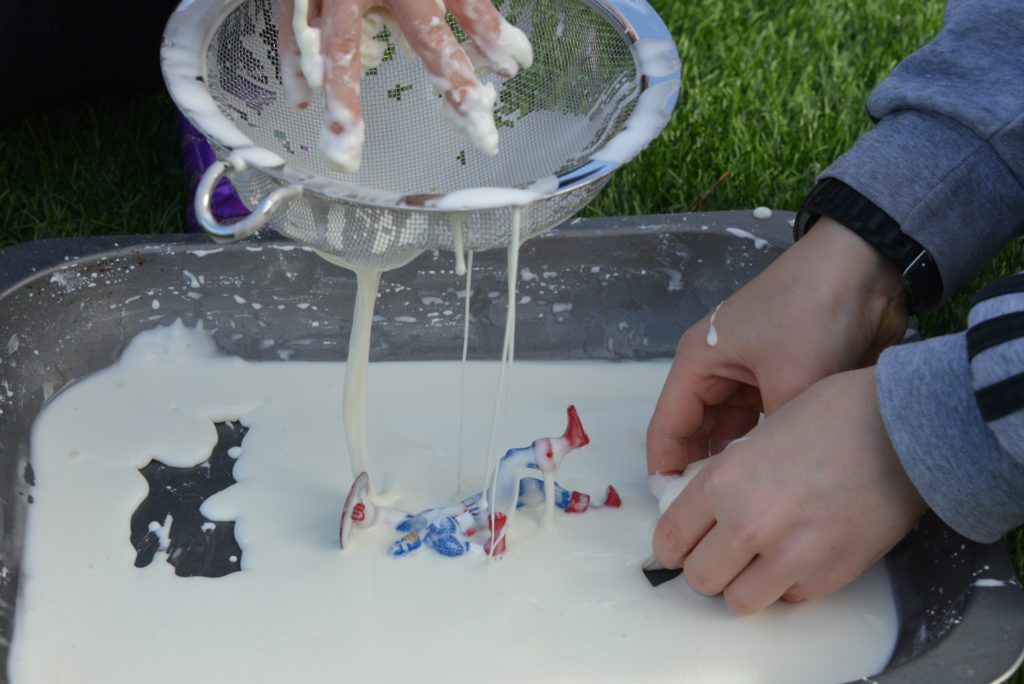
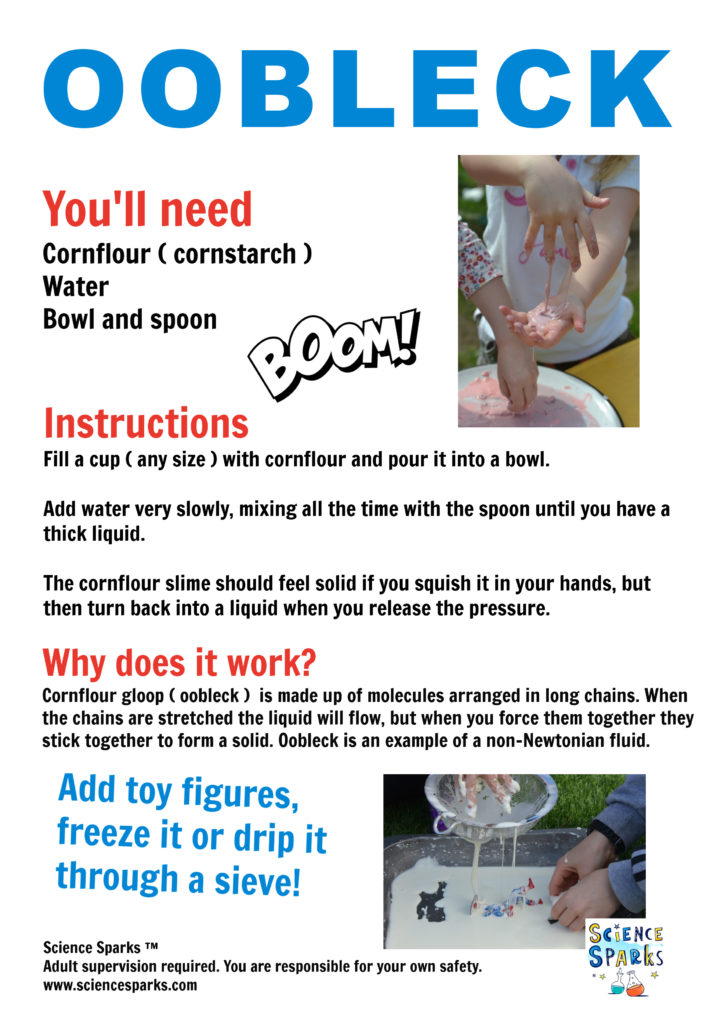
Cornflour Slime Play Ideas
Try squeezing the cornflour gloop into a ball. It should feel solid. Open your hand and watch as the cornflour slime runs through your fingers.
Can you freeze the gloop? Our frozen Kool Aid oobleck smelled wonderful.
Try pouring the slime through a colander. What happens? Can you use the slime to trap a small figure or pretend spider?
Housing a Forest makes oobleck dance!
Try adding more and less water to find out if it changes how the oobleck flows.
Oobleck Challenge
Fill a tray of oobleck and try to walk on it!
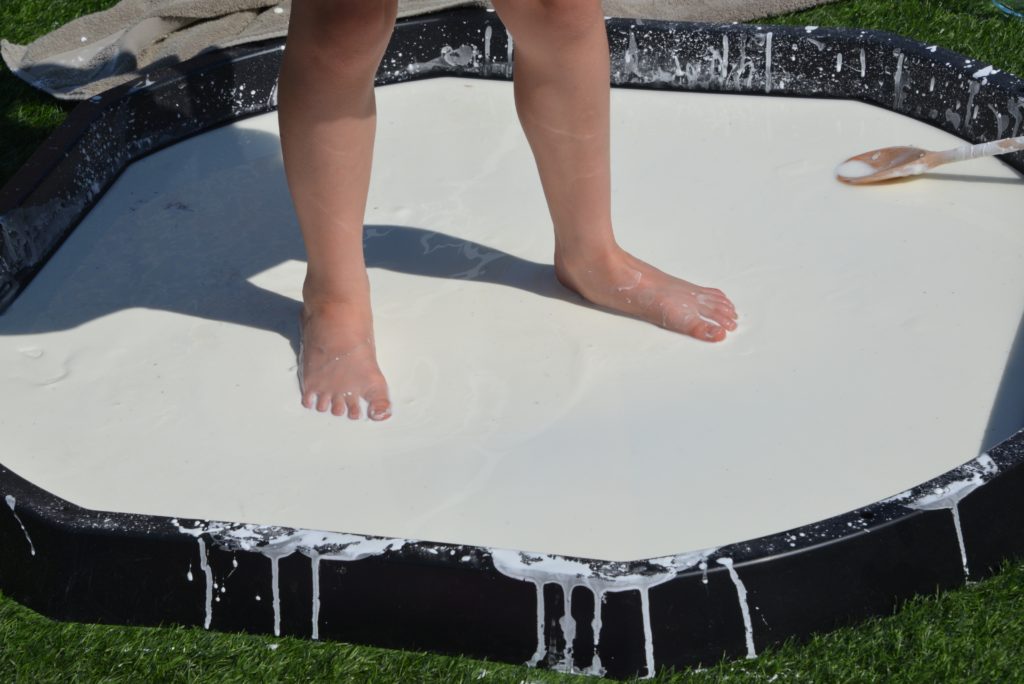
I also have a printable instruction sheet available for this. Go to the experiment instructions page to find it.
If you liked this activity, you might like our other messy play ideas, too!
Once you're finished with the oobleck, leave it somewhere warm to dry out. Then, you can either save it to use again or throw it away.
This activity is also part of my playful science series, which is full of play-based science activities for kids.
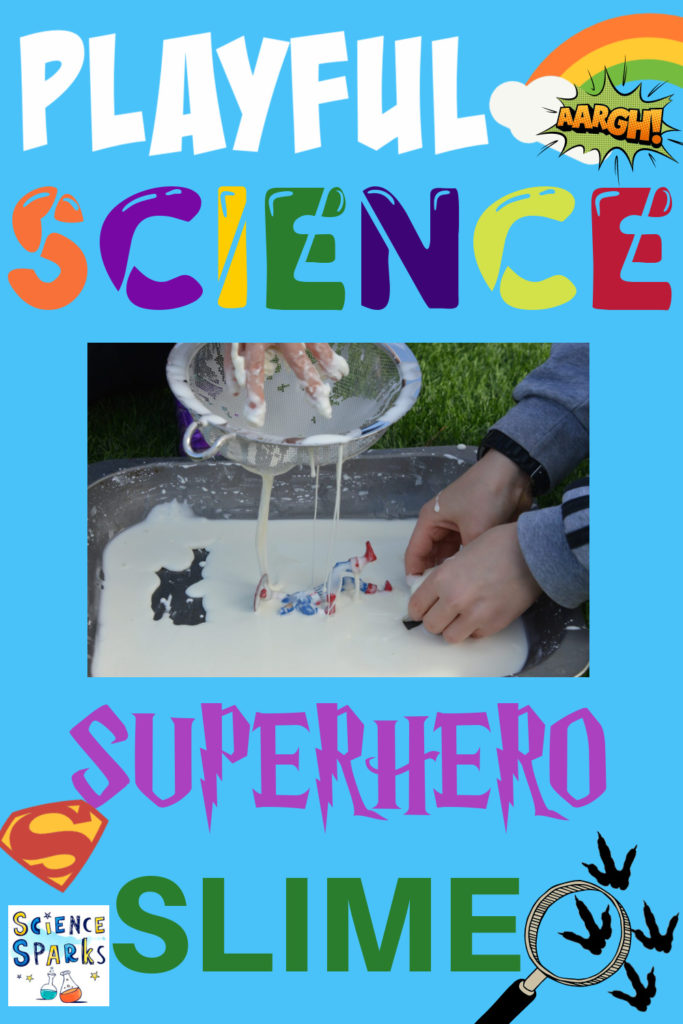
Last Updated on May 15, 2025 by Emma Vanstone
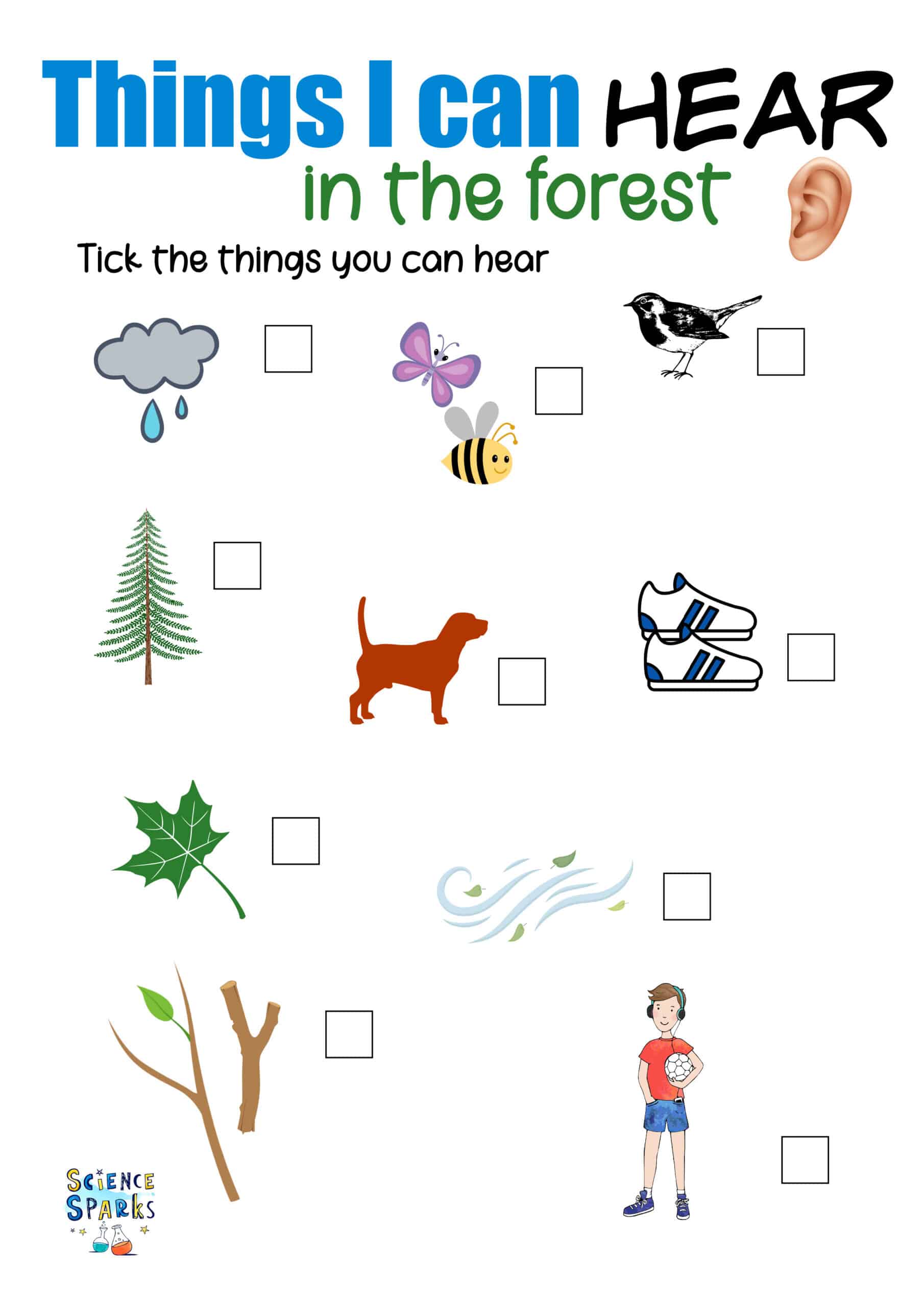
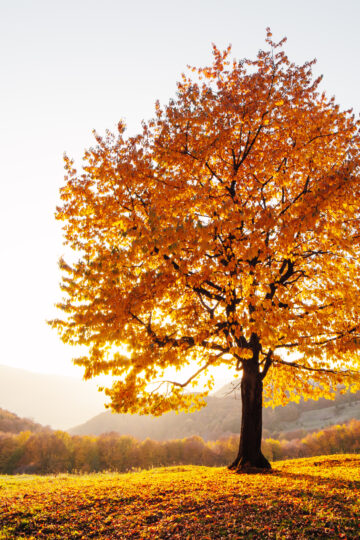
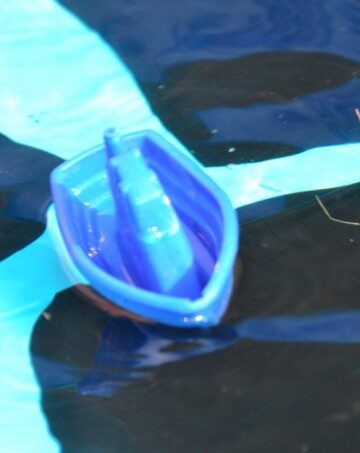
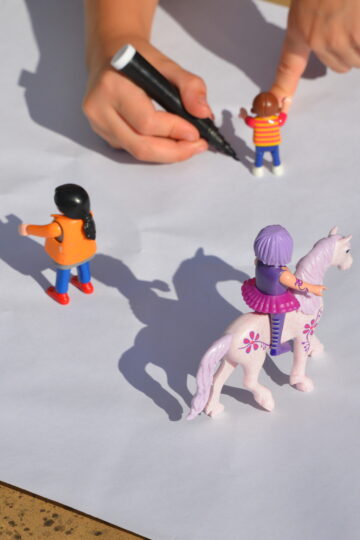
Ross Mannell says
I always loved this activity. A favourite was rolling a ball in the hands then handing it to a child and watching it collapse. I would then ask what they thought had happened. Their responses could be very creative.
mummyontheedge says
Ooo, going to have a go at this one !
Being Mum and Dad says
you learn something every day - something to pay around with when mu daughter is older. Please keep your blog going so I can refer back to it.
Being Mum and Dad says
you learn something every day - something to pay around with when my daughter is older. Please keep your blog going so I can refer back to it.
Lisa Hagg says
This is a big hit with my two girls (Emily 4 & Phoebe 2) and features in our Little Explorer classes for toddlers/preschoolers too and it is an activity that is always approached with curiosity, awe and amazement! Loving the picture too, this is a good activity around Halloween time especially if using green colouring. To avoid staining, particularly for younger children, we use waterbased paint to colour the 'goo'. Thanks Lisa
ScienceSparks says
Water based paints are a brilliant idea. Thank you so much for reading and commenting. x
Aimee says
My kids love to make this stuff! Great post- Thank you for linking up to The Sunday Showcase. Glad you could make it.